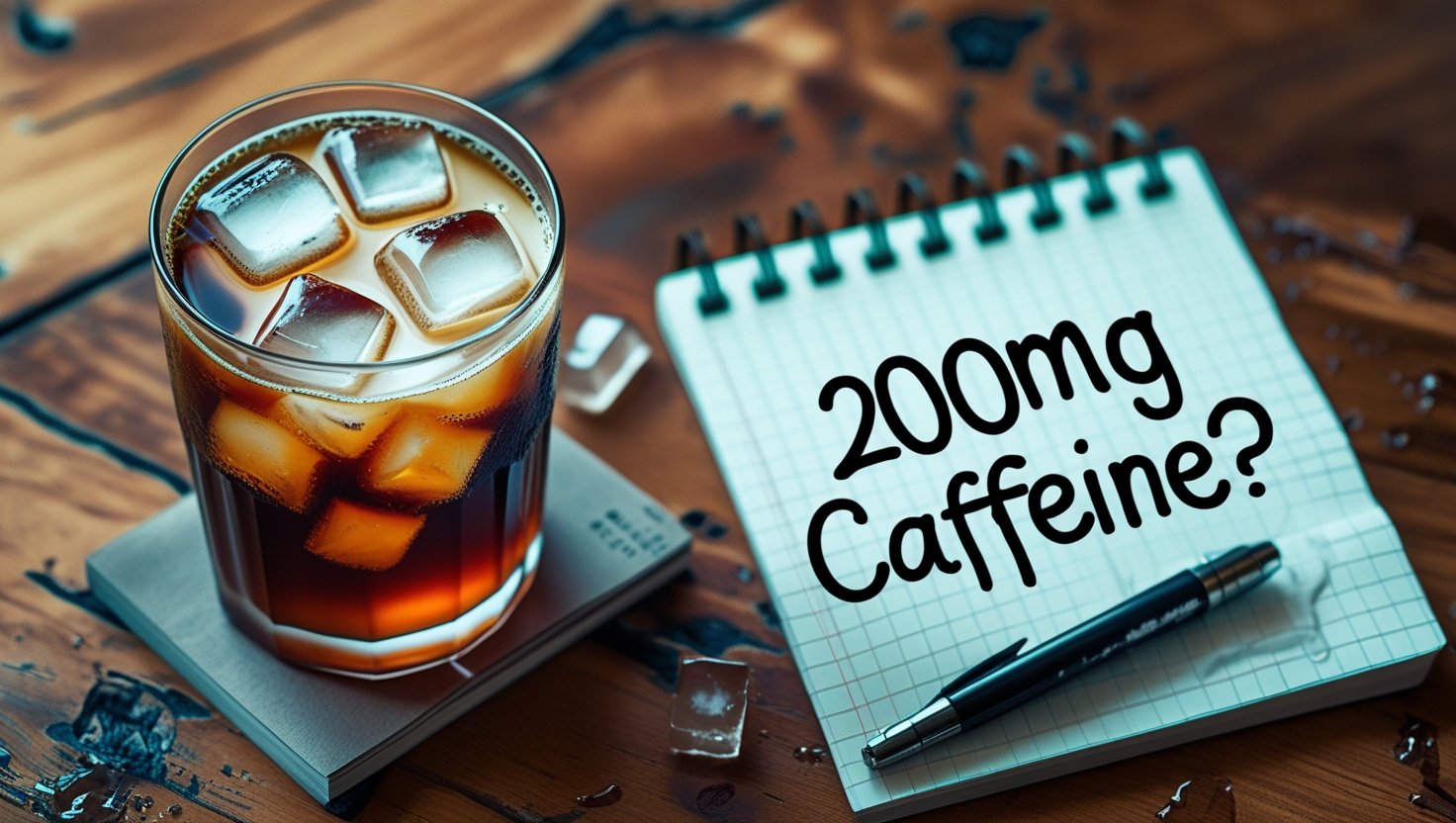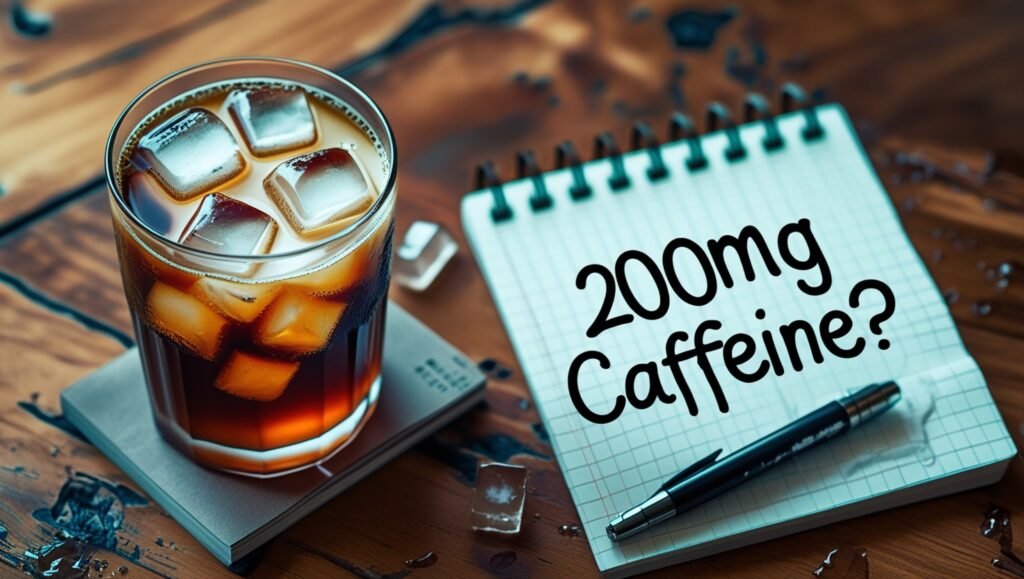How Much Caffeine Is in Cold Brew Coffee?
🌅 It Starts with a Buzz

Emily didn’t think much of her new coffee habit. She’d switched to cold brew on the recommendation of a coworker who swore by its smooth taste and “stronger kick.” One Monday morning, Emily downed her usual 16 oz bottle in record time—and by noon, she was sweating, jittery, and unable to concentrate.
It wasn’t the meeting. It was the caffeine.
Cold brew might feel gentler going down, but don’t let its smooth taste fool you. Behind its mellow flavor lies a surprisingly high caffeine content—one that many coffee lovers underestimate until their hands start to shake.
So… how much caffeine is actually in cold brew? And how does it compare to regular coffee?
Let’s break it down.
🧊 What Is Cold Brew Coffee?
Cold brew is not just “iced coffee.”
While iced coffee is brewed hot and then cooled, cold brew is made by steeping coarsely ground coffee beans in cold water for an extended period—usually 12 to 24 hours.
☕ The result:
-
Lower acidity
-
Smoother flavor
-
Higher caffeine (depending on brew ratio)
According to a study published in Scientific Reports (2018), cold brew typically extracts fewer acidic compounds and slightly fewer antioxidants compared to hot coffee—but it’s often made stronger, leading to higher caffeine per serving.
⚖️ How Much Caffeine Is in Cold Brew Coffee?
There’s no single answer because it depends on the ratio of coffee to water and whether the drink is diluted before serving.
Here’s a general breakdown:
| Type of Coffee | Serving Size | Approx. Caffeine |
|---|---|---|
| Cold Brew (undiluted) | 8 oz | 200–300 mg |
| Cold Brew (diluted) | 8 oz | 100–160 mg |
| Regular Brewed Coffee | 8 oz | 95–120 mg |
| Espresso (1 shot) | 1 oz | 63 mg |
| Iced Coffee | 8 oz | 70–100 mg |
💡 Note: Cold brew concentrates can have as much as 300+ mg of caffeine in just 8 ounces if not diluted.
🧪 What Affects the Caffeine Content?
Several factors determine how much caffeine your cold brew contains:
1. Brew Ratio
Most cold brews use a ratio of 1:4 to 1:8 (coffee to water), but some brands go as strong as 1:2 for concentrates. More coffee = more caffeine.
2. Brew Time
Longer steeping time (over 24 hours) increases caffeine extraction. However, there’s a point of diminishing returns after 18–20 hours.
3. Bean Type
-
Robusta beans have twice the caffeine of Arabica.
-
Most cold brews use Arabica for flavor, but some blends sneak in Robusta for a jolt.
4. Roast Level
Contrary to popular belief, light roasts contain slightly more caffeine by volume than dark roasts—because they’re denser.
🏪 How Much Caffeine Is in Popular Cold Brews?
Let’s look at the caffeine content of store-bought cold brews:
| Brand | Serving Size | Caffeine Content |
|---|---|---|
| Starbucks Cold Brew | 16 oz | 205 mg |
| Stok Cold Brew (Black) | 13.7 oz | 195 mg |
| High Brew Coffee | 8 oz | 200 mg |
| Chameleon Cold Brew (Concentrate) | 8 oz | 280 mg |
| Califia Farms Cold Brew | 8 oz | 90–100 mg |
| Dunkin’ Cold Brew | 16 oz | 260 mg |
Some energy drinks have less caffeine than a single bottle of cold brew!
⚠️ Is That Too Much Caffeine?
The FDA recommends:
-
Up to 400 mg/day of caffeine for most healthy adults
-
That’s roughly 2 cups of strong cold brew, or 4 shots of espresso
Going beyond that may lead to:
-
Jitters
-
Insomnia
-
Increased heart rate
-
Digestive discomfort
If you’re caffeine-sensitive or on medications, check with a healthcare provider.
🧉 Cold Brew vs Other Coffee Methods
| Method | Flavor | Caffeine per 8 oz | Brew Time |
|---|---|---|---|
| Cold Brew | Smooth, mellow | 200–300 mg (undiluted) | 12–24 hrs |
| Iced Coffee | Bold, slightly bitter | 90–120 mg | Instant (from hot brew) |
| Espresso | Strong, concentrated | 63 mg (per shot) | 25–30 sec |
| French Press | Rich, full-bodied | 80–135 mg | 4–5 mins |
| Drip Coffee | Balanced, classic | 95–120 mg | 5–6 mins |
💡 Tips to Control Caffeine in Your Cold Brew
If you love cold brew but want to moderate your caffeine, here’s how:
1. Dilute the concentrate
Many store-bought or home-brewed cold brews are meant to be mixed 1:1 with water or milk.
2. Use decaf or half-caf beans
You can cold brew decaf beans or mix 50/50 with regular for a gentler result.
3. Shorten the brew time
Steeping for 12 hours vs 24 can reduce caffeine content.
4. Use Arabica beans
Stick to 100% Arabica blends to avoid high-Robusta jolts.
🔬 Cold Brew and Caffeine Absorption
Because cold brew is less acidic, it’s gentler on the stomach and slower to irritate your digestive system. But the caffeine is still absorbed similarly to hot coffee.
A 2017 review in Frontiers in Neuroscience confirms that liquid temperature doesn’t affect caffeine absorption. However, cold beverages may feel milder, making you more likely to consume more.
🔥 How Coffea Alchemy Helps You Brew Smart
At Coffea Alchemy, we help coffee lovers like you understand every cup. From caffeine levels to flavor notes, our guides empower you to drink mindfully, whether you’re brewing for energy, taste, or both.
Whether you’re new to cold brew or perfecting your own recipe, knowing how much caffeine you’re getting makes all the difference.
🧠 Final Thoughts: Caffeine Isn’t the Enemy—Ignorance Is
Cold brew has earned its reputation as a smooth, flavorful alternative to traditional coffee. But that mellow taste can be misleading—it often contains more caffeine than you expect.
By understanding your brew ratios, bean types, and how different brands formulate their products, you can enjoy cold brew without the unintended buzz.
So the next time you crack open that bottle or steep your overnight batch, will you know exactly what’s in your cup?
Related Post
Our newsletter
Subscribe to our weekly newsletter & keep up with our latest recipes and organized workshops. You can unsubscribe at any time.


